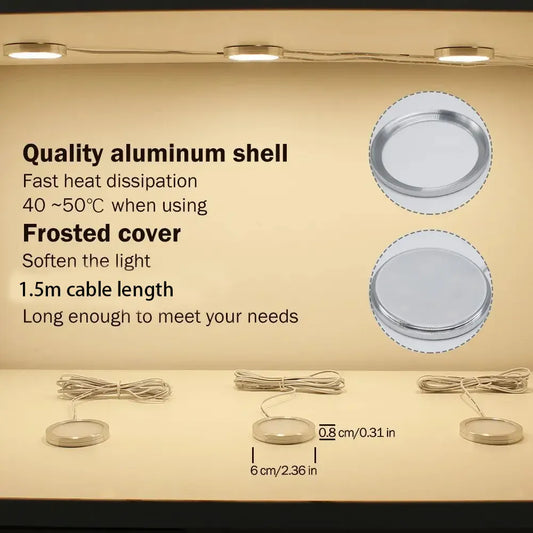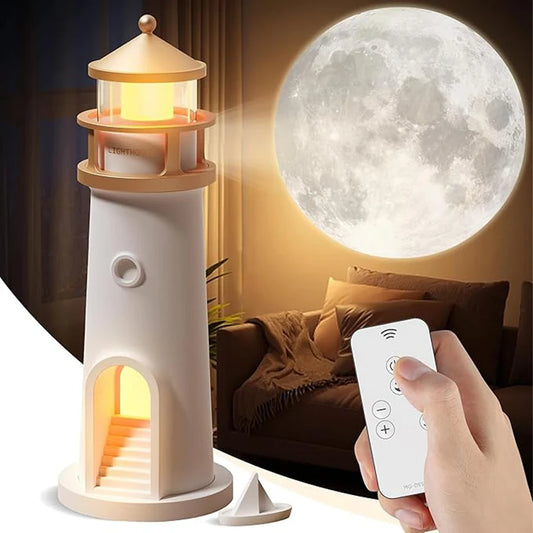
How to Space Under Cabinet Lighting?
Share
When installing under cabinet lighting, proper spacing is crucial for achieving even illumination and enhancing the aesthetics of your kitchen. To space under cabinet lighting effectively, you should generally place lights 8 to 12 inches apart. This ensures consistent light distribution and minimizes shadows. Let's explore the details of how to space under cabinet lighting, supported by expert advice and practical examples.
Understanding the Basics of Spacing
Optimal Spacing: The typical recommendation for under cabinet lighting is to place the lights 8 to 12 inches apart. This spacing provides a balanced light distribution that effectively covers the countertop without leaving dark spots or excessive brightness.
Expert Opinions and Data
- Illuminating Engineering Society (IES): According to the IES, placing under cabinet lights 8 to 12 inches apart ensures optimal illumination for tasks such as cooking and food preparation. Their guidelines highlight the importance of even light distribution to reduce eye strain and enhance kitchen functionality.
- Lighting Research Center (LRC): The LRC's studies indicate that proper spacing of under cabinet lights can significantly improve visibility and reduce shadows, making the kitchen a safer and more efficient workspace.
Detailed Guidelines for Spacing
LED Strip Lights

Dimmable Under Cabinet COB LED Strip Lights with Hand Touch Motion Sensor Switch
Consistent Coverage: LED strip lights provide continuous illumination along their length, making them ideal for under cabinet lighting. For best results, install the strips close to the front edge of the cabinet, about 1 to 2 inches back.
Spacing Multiple Strips: If your cabinets are particularly long or you need multiple strips, space them evenly apart. Ensure that the end of one strip meets the beginning of the next to avoid gaps in illumination.
Puck Lights

12V Tuya WIFI RGB Under Cabinet LED Puck Lights with Dimmable Remote Control
Individual Placement: Puck lights offer focused, spot illumination and should be spaced approximately 8 to 12 inches apart. This distance ensures that the light from each puck overlaps slightly with the next, creating a seamless lighting effect.
Task-Specific Spacing: For areas requiring more focused light, such as above the stove or sink, consider placing puck lights closer together. This increases the light intensity and improves visibility for detailed tasks.
Comparing Different Spacing Approaches
| Lighting Type | Optimal Spacing | Advantages | Disadvantages |
|---|---|---|---|
| LED Strip Lights | Continuous, 1-2 inches back from front edge | Provides even coverage, easy to install | May require trimming to fit exact length |
| Puck Lights | 8-12 inches apart | Focused illumination, adjustable placement | Can create hotspots if not spaced correctly |
Practical Examples and Tips
Example 1: Enhancing Kitchen Ambiance
In my own kitchen, I installed LED strip lights spaced about 1 inch back from the front edge of the cabinets. This setup provided a warm, even glow that highlighted the countertops and backsplash beautifully. The continuous light strip eliminated any dark spots and created a welcoming atmosphere.
Example 2: Adding Task Lighting
For my home office, I used puck lights spaced 10 inches apart under the cabinets above my desk. This arrangement offered bright, focused lighting that was perfect for detailed work and reading. The slight overlap of light beams ensured there were no shadows, making the workspace more functional.
Example 3: Customized Spacing for Unique Needs
In a recent project for a friend’s kitchen renovation, we installed LED strips along the length of the cabinets but placed puck lights closer together above the cooking area. This combination provided both general and task-specific lighting, enhancing the overall kitchen experience.
Step-by-Step Installation Guide
1. Plan Your Layout:
2. Choose the Right Lights:
Select LED strip lights for continuous illumination or puck lights for focused lighting. Ensure the lights are compatible with your power supply.
3. Prepare the Surface:
Clean the underside of the cabinets to remove grease and dust. This ensures the adhesive backing or mounting hardware sticks properly.
4. Install the Lights:
- LED Strip Lights: Measure and cut the strips to size if needed. Peel off the adhesive backing and press the strip firmly against the underside of the cabinet. Use mounting clips for extra stability.
- Puck Lights: Mark the positions and drill pilot holes. Secure the puck lights with screws or adhesive, ensuring they are evenly spaced.
5. Connect the Wiring:
Follow the manufacturer’s instructions to connect the lights to the power supply. Use wire connectors to ensure secure connections.
6. Test the Lights:
Turn on the power and test the lights to ensure they are working correctly. Make any necessary adjustments to ensure even illumination.
Conclusion
In conclusion, spacing under cabinet lighting correctly involves placing lights 8 to 12 inches apart for optimal illumination. This spacing ensures even light distribution, reduces shadows, and enhances both the functionality and aesthetics of your kitchen. By following expert guidelines and practical steps, you can achieve a professional and effective lighting setup.
Explore our range of motion sensor under cabinet lighting solutions at Lumaz to find the perfect fit for your kitchen.
FAQs
Why is spacing important for under cabinet lighting?
Proper spacing ensures even light distribution across your countertops, reducing shadows and enhancing visibility. It also helps to create a balanced and aesthetically pleasing lighting effect.
Can I use different types of lights together?
Yes, combining different types of lights, such as LED strips and puck lights, can provide both general and task-specific lighting. Just ensure they are spaced appropriately to avoid gaps in illumination.
What if my cabinets are uneven or have obstructions?
Adjust the spacing to accommodate any obstructions or uneven surfaces. You may need to use additional lights or reposition them slightly to ensure consistent coverage.
How do I ensure my lights are evenly spaced?
Use a measuring tape and mark the positions with a pencil before installation. For precise placement, consider using a template or guide.
Do I need a professional to install under cabinet lighting?
While many under cabinet lighting installations can be done as a DIY project, hiring a professional ensures the job is done safely and to code, especially for hardwired systems.
Can I add a dimmer switch to my under cabinet lights?
Yes, adding a dimmer switch allows you to adjust the brightness of your lights, providing flexibility for different tasks and moods. Ensure the dimmer is compatible with your LED lights.
Further Reading:




























 />
/>
 />
/>
 />
/>
 />
/>
 />
/>